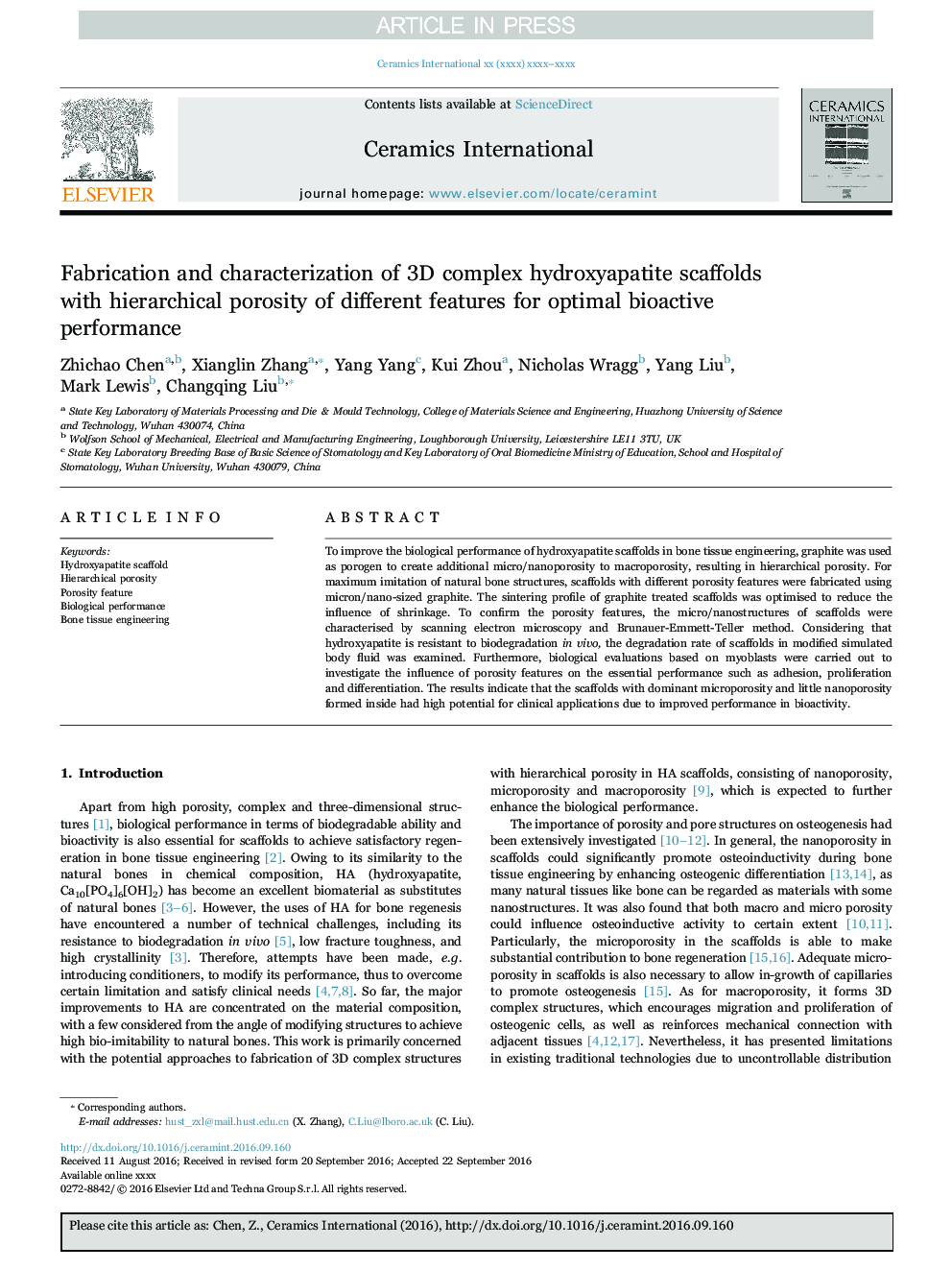| Article ID | Journal | Published Year | Pages | File Type |
|---|---|---|---|---|
| 5438151 | Ceramics International | 2017 | 9 Pages |
Abstract
To improve the biological performance of hydroxyapatite scaffolds in bone tissue engineering, graphite was used as porogen to create additional micro/nanoporosity to macroporosity, resulting in hierarchical porosity. For maximum imitation of natural bone structures, scaffolds with different porosity features were fabricated using micron/nano-sized graphite. The sintering profile of graphite treated scaffolds was optimised to reduce the influence of shrinkage. To confirm the porosity features, the micro/nanostructures of scaffolds were characterised by scanning electron microscopy and Brunauer-Emmett-Teller method. Considering that hydroxyapatite is resistant to biodegradation in vivo, the degradation rate of scaffolds in modified simulated body fluid was examined. Furthermore, biological evaluations based on myoblasts were carried out to investigate the influence of porosity features on the essential performance such as adhesion, proliferation and differentiation. The results indicate that the scaffolds with dominant microporosity and little nanoporosity formed inside had high potential for clinical applications due to improved performance in bioactivity.
Related Topics
Physical Sciences and Engineering
Materials Science
Ceramics and Composites
Authors
Zhichao Chen, Xianglin Zhang, Yang Yang, Kui Zhou, Nicholas Wragg, Yang Liu, Mark Lewis, Changqing Liu,
